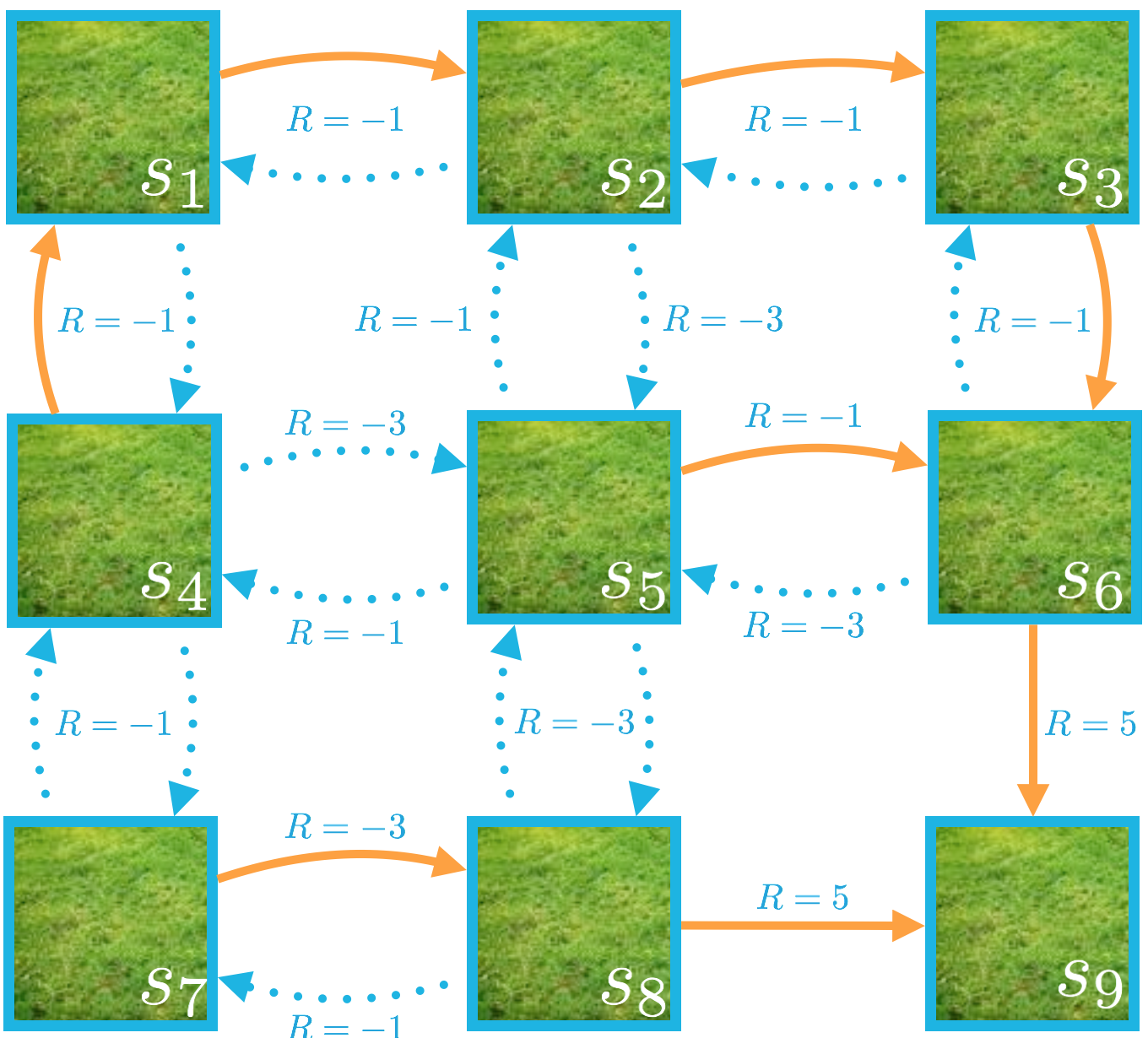27. Quiz: State-Value Functions
Quiz: State-Value Functions
In this quiz, you will calculate the value function corresponding to a particular policy.
Each of the nine states in the MDP is labeled as one of \mathcal{S}^+ = {s_1, s_2, \ldots, s_9 } , where s_9 is a terminal state.
Consider the (deterministic) policy that is indicated (in orange) in the figure below.

The policy \pi is given by:
\pi(s_1) = \text{right}
\pi(s_2) = \text{right}
\pi(s_3) = \text{down}
\pi(s_4) = \text{up}
\pi(s_5) = \text{right}
\pi(s_6) = \text{down}
\pi(s_7) = \text{right}
\pi(s_8) = \text{right}
Recall that since s_9 is a terminal state, the episode ends immediately if the agent begins in this state. So, the agent will not have to choose an action (so, we won't include s_9 in the domain of the policy), and v_\pi(s_9) = 0.
Take the time now to calculate the state-value function v_\pi that corresponds to the policy. (You may find that the Bellman expectation equation saves you a lot of work!)
Assume \gamma = 1.
Once you have finished, use v_\pi to answer the questions below.
Question 1
What is v_\pi(s_4)?
SOLUTION:
1Question 2
What is v_\pi(s_1)?
SOLUTION:
2Question 3
Consider the following statements:
- (1) v_\pi(s_6) = -1 + v_\pi(s_5)
- (2) v_\pi(s_7) = -3 + v_\pi(s_8)
- (3) v_\pi(s_1) = -1 + v_\pi(s_2)
- (4) v_\pi(s_4) = -3 + v_\pi(s_7)
- (5) v_\pi(s_8) = -3 + v_\pi(s_5)
SOLUTION:
- (2)
- (3)